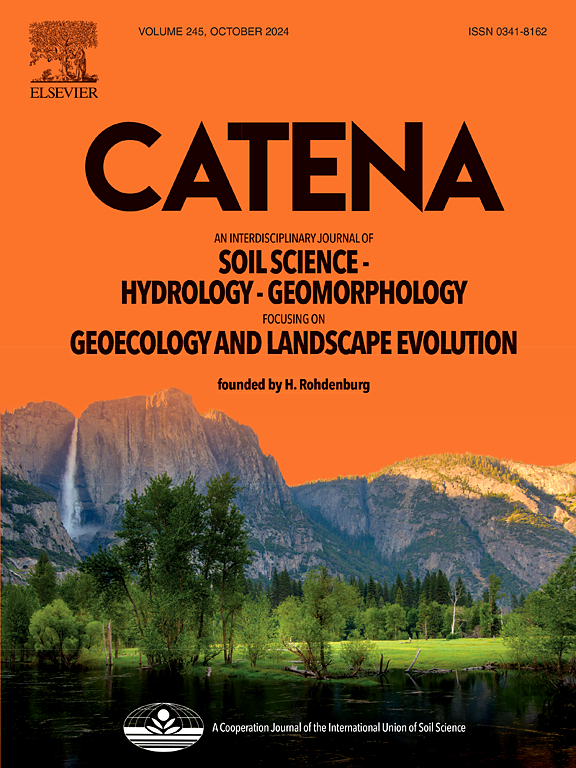Response of vegetation evapotranspiration to landscape pattern changes in an arid region: A case study of the Loess Plateau, China
Guo, Jin , Fan, Liangxin , Feng, Pengfei , Sun, Xialing , Xue, Sha
2025-05-01 null null 252(卷), null(期), (null页)
Understanding the relationship between landscape pattern changes and vegetation evapotranspiration is crucial for sustainable development in arid and semiarid regions. However, there is limited knowledge on how these factors interact spatially in such regions. This study used the Food and Agriculture Organization of the United Nations FAO-56-PM model to assess vegetation evapotranspiration and employed the landscape pattern index to track changes in landscape patterns on the Loess Plateau. The results show that: from the year of 1981-2020, vegetation evapotranspiration on the Loess Plateau increased at a rate of 4.929 mm/year (P < 0.05), whereas ET0 increased by 7.770 mm per year (P < 0.05). Significant spatial variability in vegetation evapotranspiration was observed, with higher values in the northwestern and eastern regions than in the southern region. The Loess Plateau experienced an increase in landscape complexity but a decrease in boundary complexity. With the increase of evapotranspiration on the Loess Plateau, Largest Patch Index (LPI) shows an upward trend, indicating that the change in the largest patch has a significant impact on the potential evapotranspiration. However, Connectivity Index (COHESION) and Aggregation Index (AI) show a decreasing trend with increasing evapotranspiration, indicating an increase in dispersion in the landscape. Additionally, satellite remote sensing data revealed the exposed sandy areas will diminish in the Mu Us Desert, accompanied by increased vegetation coverage and increased actual vegetation evapotranspiration. These changes led to greater spatial complexity and gradually improved the ecological environment of the Loess Plateau. We emphasize the importance of creating vegetation monitoring databases and implementing ecological water replenishment to further enhance the ecological environment in arid and semiarid regions.
相关推荐
- A framework of ecological security patterns in arid and semi-arid regions considering differences socioeconomic scenarios in ecological risk: Case of Loess Plateau, China [2025-05-01]
- Drought risk assessment on arid region under different socioeconomic scenarios: A case of Loess Plateau, China [2025-05-01]
- A novel space-spectrum array tile probability random-forest model enhances LULC mapping accuracy on Google Earth Engine: An experiment in Ordos, China [2025-05-01]
- The rectangular tile classification model based on Sentinel integrated images enhances grassland mapping accuracy: A case study in Ordos, China [2025-05-01]
- Impact of Ecological Water Transfer Project on Vegetation Recovery in Dried-Up Kongque River, Northwest China [2025-05-01]



